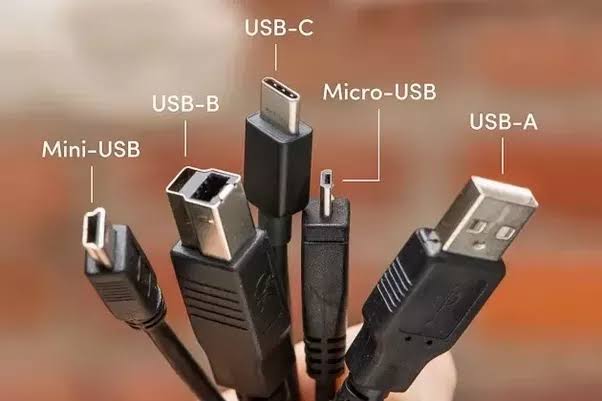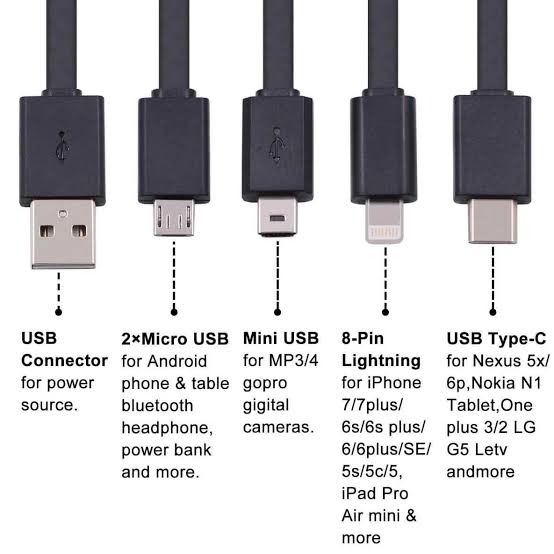CaseTemplar's Posts
Nairaland Forum / CaseTemplar's Profile / CaseTemplar's Posts
(1) (2) (3) (4) (5) (of 5 pages)
 Phones / Re: The Various USB Types Explained: Type A, Type C E.t.c by CaseTemplar(m): 8:59am On Oct 16, 2018 Phones / Re: The Various USB Types Explained: Type A, Type C E.t.c by CaseTemplar(m): 8:59am On Oct 16, 2018 |
Olubidex:
Thank you op for this concise information No problem  |
 Phones / Re: The Various USB Types Explained: Type A, Type C E.t.c by CaseTemplar(m): 10:03pm On Oct 15, 2018 Phones / Re: The Various USB Types Explained: Type A, Type C E.t.c by CaseTemplar(m): 10:03pm On Oct 15, 2018 |
nymphomaniac:
USB means universal several bus...
Nw u know I Think It's serial bus bro 1 Like |
 Phones / Re: The Various USB Types Explained: Type A, Type C E.t.c by CaseTemplar(m): 10:02pm On Oct 15, 2018 Phones / Re: The Various USB Types Explained: Type A, Type C E.t.c by CaseTemplar(m): 10:02pm On Oct 15, 2018 |
Realboygenius:
Type C is the dopest
I use on the Tecno Phantom 8 and it charge so fast. Yhea But You should note that Type C uses the Usb 2.0 and not 3.0.......In order words what we are using is a reversible Micro usb!  |
 Phones / Re: The Various USB Types Explained: Type A, Type C E.t.c by CaseTemplar(m): 3:02pm On Oct 15, 2018 Phones / Re: The Various USB Types Explained: Type A, Type C E.t.c by CaseTemplar(m): 3:02pm On Oct 15, 2018 |
hisgrace090:
USB is the game changer! I Totally agree. Although this post might sound like Chinese to apple users  |
 Phones / The Various USB Types Explained: Type A, Type C E.t.c by CaseTemplar(m): 2:30pm On Oct 15, 2018 Phones / The Various USB Types Explained: Type A, Type C E.t.c by CaseTemplar(m): 2:30pm On Oct 15, 2018 |
Confused about the various USB types? Let's learn the mechanism. [/quote]The USB( Universal serial bus) Was an industry standard designed in 1996 to set a unified connector of personal computers and their various peripherals. Before then, there were various connector interfaces. The usb has succeeded in replacing them and is currently the most popular type. That's by the way though.
The past few years has brought a host of new technological advancements, With common technology getting obsolete and being replaced by more efficient devices. So is the case with the micro USB, Which was probably the most common Usb connector. The usb type c has improved on the problems faced with the Micro usb and is gradually replacing the former standard for the tech industry.
Various generations of USB comprise USB 1.0 (and later 1.1), USB 2.0 (most widely used today), USB 3.0 and currently USB 3.1 (which ports are usually a bright blue). USB 3.1 processes data at speeds of up to 10 Gbps compared to USB 3.0 at 5 Gbps. The popular USB 2.0 clocks in at 480 Mbps, an improvement from the 12 Mbps throughput of USB 1.0. This ought not to be confused with Standard types A, B, and the newest C. These are physical attributes you can see with the naked eye. These standards tend to be backwards compatible (you will need a special adapter for type C).
The micro usb type b is probably what you are using now. It's irreversible( This is it can only be plugged in one direction). It's mostly used in mobile phones, Power banks and some Mp3 players. Unless you are using the more recent Type c, which is available for a newer set of smartphones and has a increased demand on laptops. The type c uses the original usb as a foundation and aims to provide more power and speed. It is reversible, as it can be plugged in any direction. So let's Explain the basics in a simplified manner.
Checking out the various USB types:
1: USB type A
The type A is common connector on the end of the cord. Most peripherals(like the mouse, Keyboard and scanner) have a type A connector also. The type A port is mostly used for data transfers or just charging.
2: USB type B
This one is just like the type A, but has a boxy shape and is used by peripherals like joysticks and printers to connect to a computer. Although less common than the type B,
3: Mini USB:
Used by mp3 players and some cameras, it was used as a standard in mobile devices. It is mostly used as a connector to the peripheral. Black berry phones in the past used mini usb connectors.
4: Micro USB:
The micro USB is the current standard for mobile phones, although that's about to change with the emergence of type c ports.
5: USB Type C:
A decent reversible connector that builds on the structure of the Micro USB with a host of improvements and advancements .It boasts of higher transfer speeds and flexibility also. It should be noted that most mobiles that utilize USB Type C uses the USB 2.0 instead of the 3.0 USB. Apple has adopted this as Thunderbolt 3.
6: 8- pin lightning:
This is apple's personal connector used dor the iphones and ipads. This is not a USB standard but used by apple as an alternate connector to the micro USB despite being similar in size. It can be easily mistaken for a Type C USB.
7: USB 3:
This is the newest USB type.The latest USB standard offers faster transfer rates and is, for the most part, backwards-compatible with earlier versions of USB. Standard-A connectors are identical to the Type-A connectors of previous versions, but are usually colored blue to distinguish them.
They are fully backwards-compatible but the increased speeds are only available when all components are USB 3 compatible.[quote] Cc: lalasticlala mynd44 dominique This Might interest You Guys https://techtemplar..com/2018/10/the-various-usb-types-explained.html?m=1 1 Like 

|
(1) (2) (3) (4) (5) (of 5 pages)
(Go Up)


